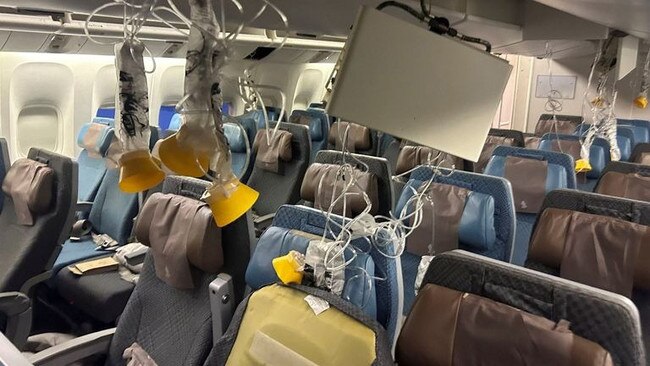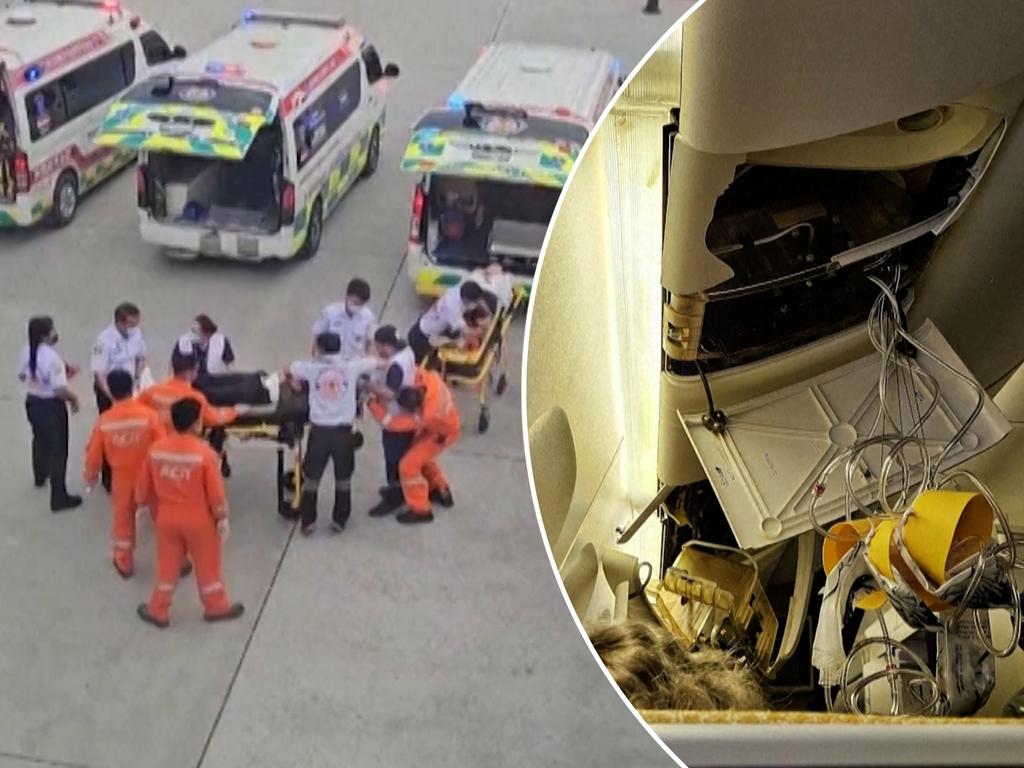Why the turbulence that killed a Singapore Airlines passenger is so dangerous - and could be more frequent
Here’s what worried airline passengers should know about ‘the most dangerous type of turbulence,’ and how to protect themselves.

The death of a passenger aboard a Singapore Airlines flight that hit turbulence is raising concerns and questions among air travellers. Here’s what passengers should know about the Singapore Airlines flight, how common it is for turbulence to cause injuries - and why turbulence may become more common.
What happened on the Singapore Airlines flight?
Severe turbulence experienced by a Singapore Airlines flight resulted in the death of one person and injured 30 others, according to the airline.
The incident happened aboard flight SQ321, which was flying from Heathrow Airport in London to Singapore on May 20 when it experienced “extreme turbulence” at 37,000 feet over Myanmar, 10 hours after departure, the airline said in a Facebook post.
The pilot declared a medical emergency and diverted the plane to Bangkok, where it landed. The one death was a 73-year-old grandad Geoff Kitchen, who, according to reports from British publications The Mirror and The Telegraph, suffered a heart attack during the flight.
The turbulence led to “multiple injuries,” and 18 individuals had been hospitalized, while 12 were still being treated in hospitals, the airline said in an update posted Tuesday morning Eastern time. The plane was carrying 211 passengers and 18 crew members on board. The plane was a Boeing (BA) 777-300ER aircraft.
How often do people get hurt from severe turbulence?
It’s not common for turbulence to result in injuries, according to data from the Federal Aviation Administration, which tracks reports of injuries from turbulence but doesn’t track general incidents of turbulence. In 2022, the last year for which data was available, the FAA reported that four passengers and 13 crew members experienced serious injuries from 17 turbulence incidents. From 2012 to 2022, only 34 passengers were seriously injured over 163 turbulence instances.
Andrew Davies, who was a passenger on the Singapore Airlines flight, describes to Sky's @KamaliMelbourne the 'traumatic' moment when the plane suddenly dropped in severe turbulence, leaving one other passenger dead
— Sky News (@SkyNews) May 21, 2024
Full story âž¡ï¸ https://t.co/RcakcdKvKKpic.twitter.com/H6JL28Hte8
According to the National Transportation Safety Board, a serious injury is defined as “any injury that (1) requires the individual to be hospitalized for more than 48 hours, commencing within seven days from the date the injury was received; (2) results in a fracture of any bone (except simple fractures of fingers, toes, or nose); (3) causes severe hemorrhages, nerve, muscle, or tendon damage; (4) involves any internal organ; or (5) involves second-or third-degree burns, or any burns affecting more than five percent of the body surface.” What is the most dangerous type of turbulence?


But “turbulence is a serious workplace safety issue for flight attendants, and today we are sadly reminded it can be deadly,” Sara Nelson, international president of the Association of Flight Attendants-CWA, a union representing 50,000 flight attendants across 20 airlines, told MarketWatch.
Nelson said the “dangerous, shaky feeling” known as turbulence comes from shifting air currents, and that initial reports suggest that the Singapore Airlines flight encountered the most dangerous type of turbulence, known as clear-air turbulence.
“It cannot be seen and is virtually undetectable with current technology,” Nelson told MarketWatch. “One second, you’re cruising smoothly; the next, passengers, crew and unsecured carts or other items are being thrown around the cabin.”
Which flight routes have the most turbulence?
Some flight routes are more prone to turbulence than others. According to Turbli, a turbulence forecast tool, the route with the most average turbulence in 2023 was between Santiago, Chile and Santa Cruz de la Sierra, Bolivia, which spans a distance of 1,905 kilometers. The second and third most turbulent routes were between Almaty, Kazakhstan and Bishkek, Kyrgyzstan; and Lanzhou and Chengdu in China.
The most turbulent U.S.-based routes include those between Nashville, Tenn. and Raleigh-Durham, N.C.; Charlotte, N.C. and Pittsburgh; and Denver to Puerto Vallarta, Mexico, according to Turbli.
See inside the Singapore Airlines plane which had to make an emergency landing, after a 73-year-old British man died from a suspected heart attack during the turbulence on the London-Singapore flight
— Sky News (@SkyNews) May 21, 2024
Full story âž¡ï¸ https://t.co/QxPKmwFSwDpic.twitter.com/oI0KPrI6Df
How can passengers protect themselves when flights experience turbulence?
Passengers should listen to the pilots and flight attendants and fasten their seat belts, according to the FAA.
In the case of the Singapore Airlines flight that experienced turbulence, seat belts reportedly helped one passenger stay put. “Suddenly the aircraft starts tilting up and there was shaking so I started bracing for what was happening, and very suddenly there was a very dramatic drop so everyone seated and not wearing a seatbelt was launched immediately into the ceiling,” Dzafran Azmir, a 28-year-old student on board the flight, told Reuters.
The FAA also recommends that people pay attention to the safety briefing at the start of the flight and familiarize themselves with the safety briefing card that’s usually tucked in the seat pocket. The FAA also said it’s important for people traveling with small children to use an approved child car seat or similar device if a child is under 2, so they are strapped in.

Is turbulence becoming more common?
Turbulence could become more frequent and severe as climate change affects the world, according to a June 2023 study. Between 1979 and 2020, severe-or-greater turbulence increased by 55% for flights across the North Atlantic, the study found, and the authors said it’s expected to worsen because of climate change. “An invisible form called clear-air turbulence (CAT) is predicted to become more frequent because of climate change,” the authors wrote.
One passenger was killed and dozens injured after a Singapore Airlines flight from London hit severe turbulence en route, forcing it to make an emergency landing in Bangkok, officials and the airline said https://t.co/XVsOr6CEgcpic.twitter.com/3YR1UUB6iq
— Reuters (@Reuters) May 21, 2024
While cases like those aboard SQ321 are relatively uncommon, air travelers should be prepared to experience more turbulence in the years to come, Nelson said.
And “as our climate changes, severe and clear air turbulence instances are on the rise,” she explained. “Always follow crew instructions and wear your seat belt whenever seated. It is a matter of life and death.”
The Wall Street Journal







To join the conversation, please log in. Don't have an account? Register
Join the conversation, you are commenting as Logout